Follow the directions in the manual until you get stuck.

Stuck one) Remove the three window glass retaining nuts and the window glass stud (6 mm Allen) and lift out the glass.
Yea, right! The stud loosened OK but you needs a special tool to go around the glass with two prongs to hold the back from turning.
Since I could not see that until I had it out, the above picture is my solution.
I cut a hole to allow the glass to come out with the stud in place.
You can always fiber glass it back in but I left it for next time.

Stuck two) Regulator mounting bolts, regulator electrical connector and regulator assembly from door.
I knew that the regulator would not come out the top with the motor on so I moved it to where I could drill the rivets out.
Then I removed the old motor.
By the way! I noticed that the horizontal track had a roller on the end that was out of the vertical track and stuck on top of it.
So it was easy to remove the horizontal track which made it easier to get the regulator out.
(If the regulator will not come out with it on, you may want to drill out a rivet to get horizontal track off.)
I now tried to get it out the top but the regulator cut the rubber on the wether stripping trying to remove it.

Stuck three)
Who wrote the manual anyway!
I had to loosen the inside plate and disconnect one rod. Even then I had to turn it every way you could to get it in front of the plate and out.
Not bad, only cost me one days effort so far.
After getting it out, I could see how it worked and that it just jumped track.
If I had known, I could have popped it back on the track, lowered the stop and been done without removing the glass.
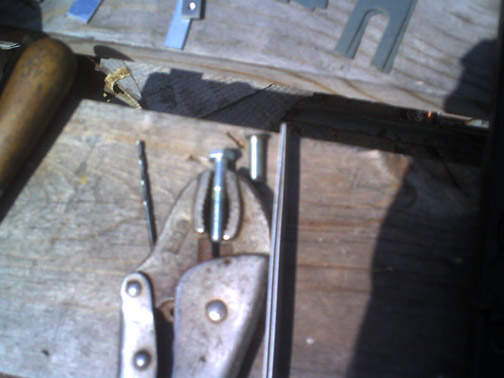
This is a picture of the original rivet and the bolt that will replace it.

The rivet hole is under the teeth.
Stuck Four) I do not have a tool to put that type of rivet in.
solution, grind the head of a bolt the be like the rivet.
Stuck Five) Two rivets fell out but one is stuck under the gear plate.
I had to drill out the rivets on the track to get rid of the third rivet (don't rivet it back on until the bolt is in).
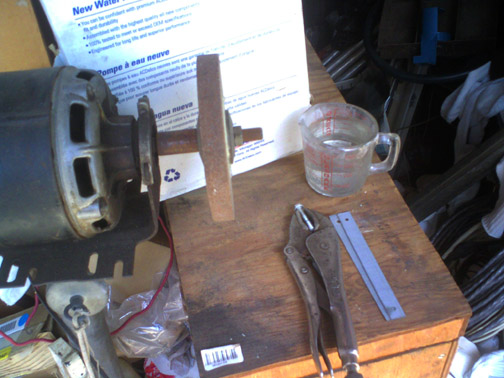
The head of the bolt needs to be ground down to 1/8 to 3/16 of an inch to give clearance for the teeth.
This is about the clearance the rivet had.
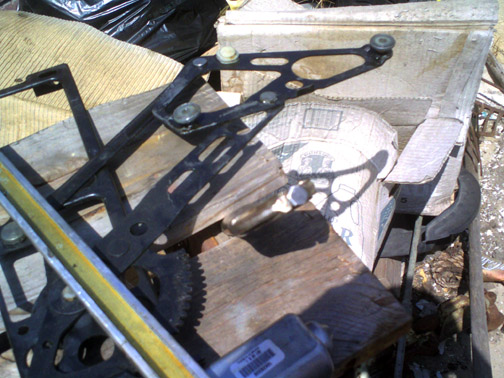
The bolt ground down.
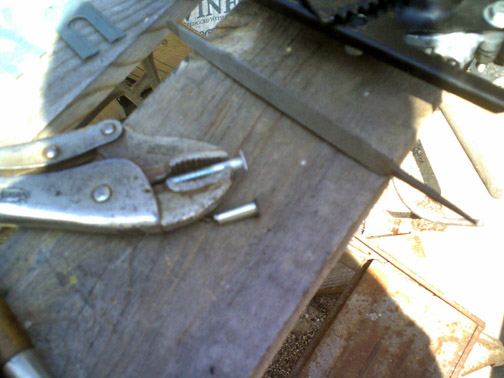
The edges beveled to make sure they do not catch incase the gear flexes.

Place the bolt head down (not over the hole) under the gear and spin it 300 degrees,
rock it and lift it to be sure you have enough clearance.

Pull down on up/down arm to get the two bolts in place under the teeth.
Then you have to move the arm so the motor will engage the teeth.
I pulled it down and inserted a punch to wedge it open (see picture).
Put the motor down and tighten the nuts finger tight.
Then jiggle the arm until you can get the motor flush (the motor will hold the arm).
Tighten the nuts (I had a small flat wrench but you can use vise grips on the upper threads since the next step is to cut that off).
Picture with one bolt cut down to the nut.
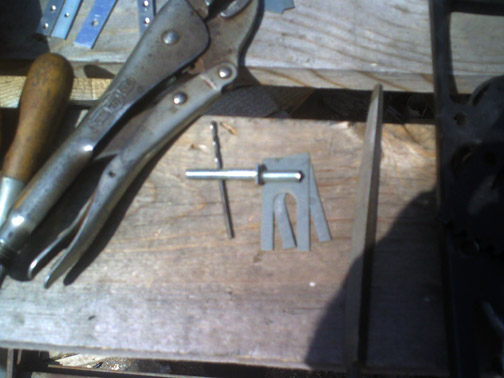
Now you can rivet the track back on.

On rivet set, the other ready to set.

Plug it in and let it go all the way up and down. Put it back in the door.
After I got it back in the door, I put the horizontal back on since I left it full up.
Now I forced it back into the track (using a break drum spring tool) which is what I should have in the first place. Grrr.
Gee! This wasn't so bad. Kind of like installing something on a Windows box.
It take you a week and you feel Soo good and brag how you installed it yourself.
Of cource, on a Mac, it works when installed and there is no satisfaction on having done it.
So, if this had been easy, this article would not have been written.
For example, my '58 Vette has an access plate with two screws.
I wonder what happened to the type of engineers that designed it? :-)












